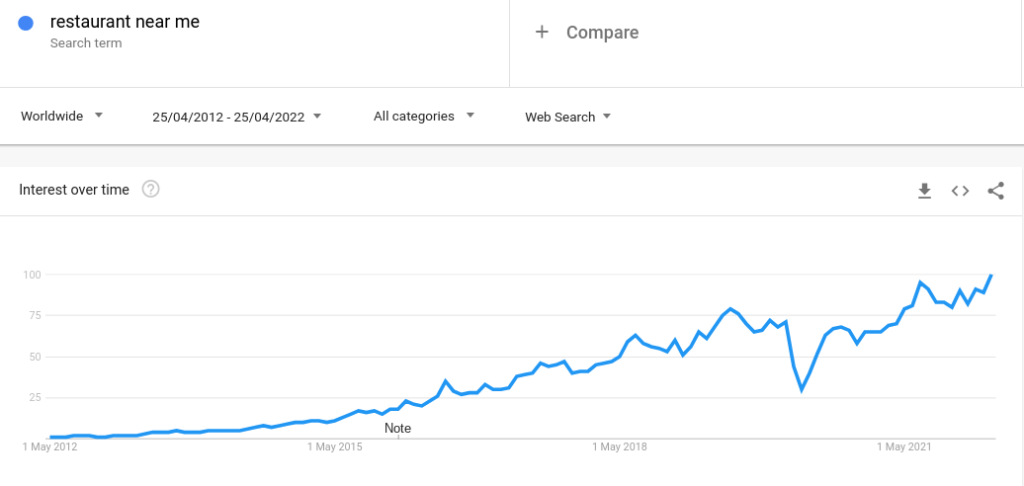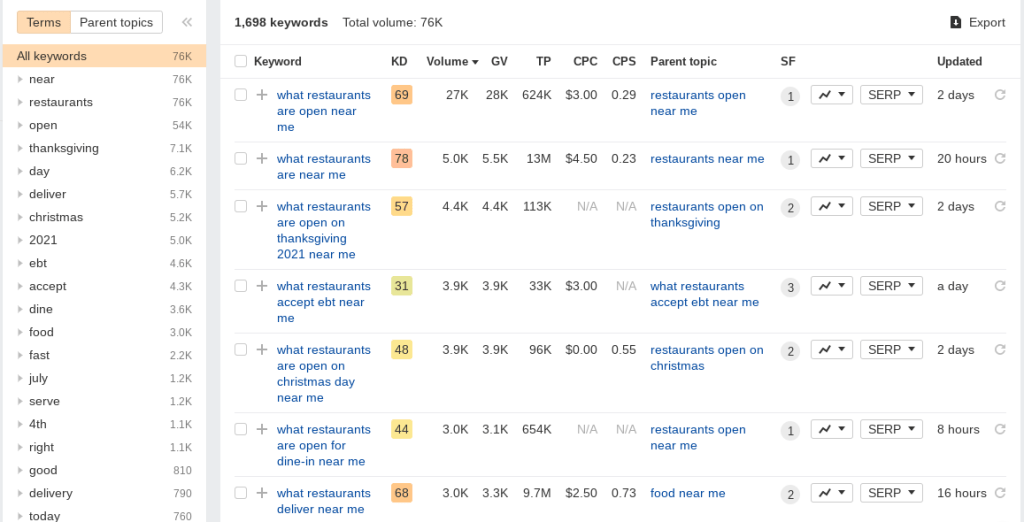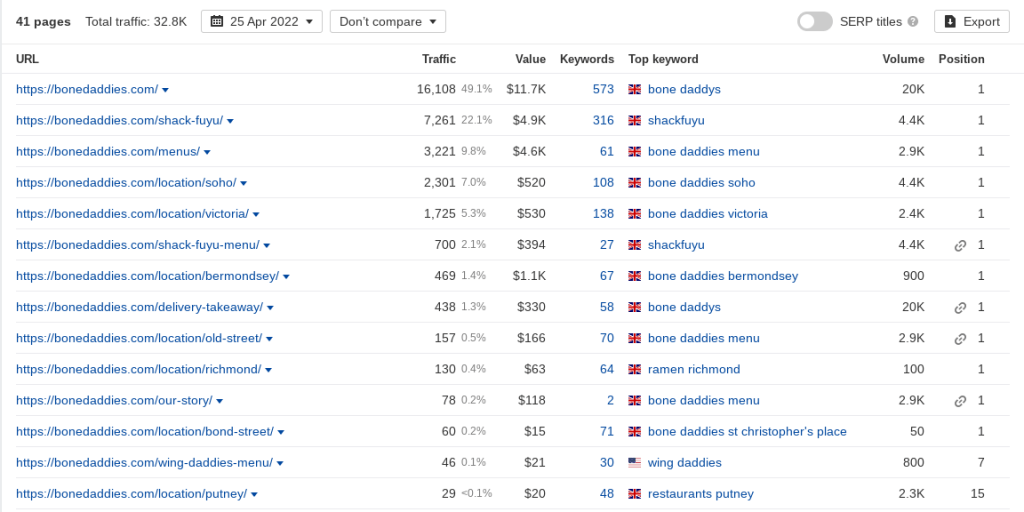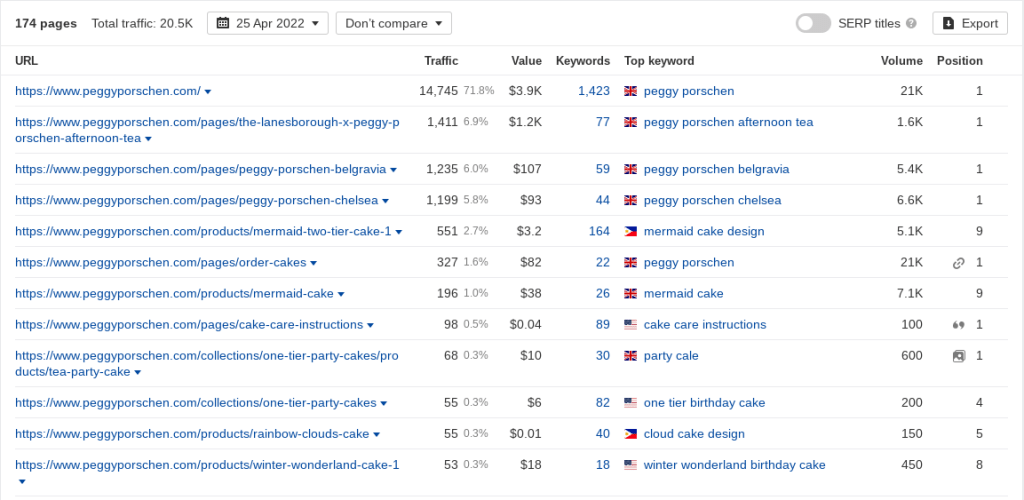Egal, ob Sie ein Restaurant, ein Café oder eine Bäckerei betreiben, Sie werden täglich mit vielen Herausforderungen konfrontiert, die mit dem Betrieb Ihres Unternehmens zusammenhängen. Eine der größten Herausforderungen ist die Gewinnung neuer Kunden. In der heutigen technologiezentrierten Gesellschaft nutzen viele potenzielle Kunden das Internet, um ein Restaurant zu finden. Daher konzentrieren sich viele Unternehmen in dieser Branche auf die Erstellung und Optimierung von Websites für ihr Unternehmen, um neue Kunden effektiv online zu gewinnen.
Es gibt zahlreiche bekannte Möglichkeiten, wie ein Unternehmer - z. B. der eines Restaurants, Cafés oder einer Bäckerei - Besucher auf seine Website locken kann. Drei der gängigsten Methoden sind Pay-per-Click-Anzeigen (PPC), Social Media Marketing und Suchmaschinenoptimierung (SEO). Diese Methoden haben unterschiedliche Vor- und Nachteile. Eine gut organisierte Website-Struktur verbessert die Benutzerfreundlichkeit und das Verständnis der Suchmaschinen für den Inhalt der Website, was für eine effektive Suchmaschinenoptimierung entscheidend ist.
Die Hauptvorteile von PPC und Social Media Marketing sind, dass Sie sofortige Ergebnisse erhalten, sobald Sie die Werbekampagne starten. Sie werden einen Anstieg der Besucherzahlen auf Ihrer Website feststellen. Die Kehrseite der Medaille ist jedoch, dass beide Optionen kostspielig sind und Ihnen auf lange Sicht keine Vorteile oder Ergebnisse bringen werden. Sie werden nur so lange Besucher auf Ihre Website bekommen, wie Sie für die Anzeigen bezahlen. Die Eintragung von Unternehmen in lokale Verzeichnisse ist ebenfalls wichtig, um die lokale Sichtbarkeit zu erhöhen und wertvolle Backlinks zu generieren.
Bei der dritten Option, der Suchmaschinenoptimierung (SEO), gibt es natürlich verschiedene Vor- und Nachteile. So dauert es bei SEO-Methoden in der Regel ein paar Monate, bis sie für Ihr Unternehmen Ergebnisse bringen. Andererseits werden sich die Positionen Ihrer Website in den Suchergebnissen verbessern, was zu mehr organischem Verkehr auf Ihrer Unternehmenswebsite führen wird. Und Ihre Website behält diese Positionen auch dann, wenn Sie in Zukunft keine SEO-Dienste mehr in Anspruch nehmen. Im Wesentlichen bedeutet dies, dass Sie unbegrenzt kostenlosen Traffic erhalten können, im Gegensatz zu PPC- und Social-Media-Anzeigen, die Ihr Unternehmen nur so lange unterstützen, wie Sie für ihre Dienste bezahlen.
Daher ist es klar, dass SEO die beste Option ist, vor allem wenn man die langfristigen Auswirkungen betrachtet. Für PPC- und Social-Media-Anzeigen müssen Sie jedes Jahr Unsummen bezahlen. SEO ist auch deshalb eine fantastische Wahl, weil die Kunden Ihrem Unternehmen mehr Vertrauen entgegenbringen, wenn sie Ihre Website organisch über die Suchergebnisse finden, anstatt eine Werbung für Ihr Unternehmen zu sehen.
Die entscheidende Frage, die man sich stellen muss, ist, wie effektiv eine gründliche SEO-Strategie für ein Lebensmittel- und Getränkeunternehmen und seine Website sein kann? In diesem Artikel werden wir Ihnen zeigen, wie vorteilhaft SEO für Ihr Unternehmen sein kann. Zunächst betrachten wir die Online-Suchnachfrage.
Einführung in die Restaurant-SEO
Restaurant-SEO ist ein wichtiger Aspekt des digitalen Marketings für Gastronomiebetriebe, der darauf abzielt, die Online-Präsenz zu erhöhen und mehr Kunden anzuziehen. Durch die Optimierung der Website und der Online-Präsenz eines Restaurants können Unternehmen ihr Suchmaschinen-Ranking verbessern und mehr Besucher auf ihre Website bringen. Suchmaschinenoptimierung (SEO) ist für Restaurants unerlässlich, um ihre Online-Präsenz zu erhöhen, und eine gut strukturierte SEO-Strategie für Restaurants kann Unternehmen wie Cosi Bar Ristorante dabei helfen, ihre Platzierungen in der lokalen Suche zu verbessern und mehr lokale Kunden anzuziehen. Mit den richtigen SEO-Strategien kann Ihr Restaurant bei relevanten lokalen Suchanfragen ganz oben erscheinen, was zu mehr Kundenverkehr und Online-Bestellungen führt.
Suchanfrage für Restaurants bei Google

Die obige Abbildung zeigt die Google-Suchdaten für den Begriff "Restaurants in meiner Nähe". Weltweit suchen jeden Monat etwa 29 Millionen Menschen nach diesem Begriff! 24 Millionen dieser Suchanfragen entfallen auf die Vereinigten Staaten, 1,8 Millionen auf Indien, 1,1 Millionen auf Kanada und 1 Million auf das Vereinigte Königreich. Dies zeigt, dass eine unglaubliche Anzahl von Menschen in vielen Ländern täglich nach lokalen Restaurants sucht. Mit einer umfassenden SEO-Strategie, die lokale Schlüsselwörter in Ihre Restaurantlisten einbezieht, können Sie jeden Monat Zehntausende von Besuchern auf Ihre Website locken.

Auch Google Trends zeichnet ein positives Bild. Die obige Abbildung zeigt ein deutliches Wachstum für den Suchbegriff "Restaurant in meiner Nähe" in den letzten zehn Jahren (mit der verständlichen Ausnahme des Jahres 2020, als die weltweite Pandemie zuschlug). Daraus geht hervor, dass jedes Jahr mehr Menschen im Internet nach lokalen Restaurants suchen. Im Wesentlichen bedeutet dies, dass Sie, wenn Sie sich für ein SEO-Unternehmen entscheiden, um Ihre Restaurant-Website in den Suchmaschinenergebnissen zu bewerben, in einer fantastischen Position sind, um auf Jahre hinaus einen immer höheren Return on Investment (ROI) zu erzielen. Dies ist besonders wichtig, wenn man bedenkt, dass PPC- und Social-Media-Anzeigen immer teurer werden und die Konkurrenz groß ist. Darüber hinaus können positive Kundenrezensionen die lokalen Rankings erheblich verbessern und mehr Besucher in Ihr Restaurant locken.
Viele Suchbegriffe zum Auffinden von Restaurants
Wenn Sie über Ihr Restaurant, Café oder Ihre Bäckerei nachdenken, müssen Sie sich bewusst sein, dass Begriffe wie "Café" oder "Restaurant in meiner Nähe" nur zwei mögliche Suchbegriffe sind, die ein potenzieller Kunde verwenden könnte. Es ist wichtig, sich bewusst zu machen, dass zahlreiche andere Suchbegriffe verwendet werden können, wenn Menschen nach einem Restaurant suchen. Dies ist wichtig zu wissen, denn ein entscheidender Aspekt einer guten SEO-Strategie ist die Keyword-Recherche. Dabei untersuchen SEO-Experten die Suchanfragen und bestimmen, welche Seiten auf der Website für die Verwendung von Schlüsselwörtern optimiert werden müssen. Dies trägt dazu bei, die meisten Besucher anzuziehen. Darüber hinaus kann die Konzentration auf On-Page-SEO für Restaurant-Websites das Suchranking erheblich verbessern und relevante Besucher anziehen. Zur Veranschaulichung dieses Punktes haben wir nachstehend einige Aufzählungspunkte mit Beispielen für mögliche Suchanfragen zusammengestellt, die ein potenzieller Kunde auf der Suche nach einem Restaurant, einer Bäckerei oder einem Café eingeben könnte:
- Wo kann man essen in...' + Ort. Zum Beispiel: "Wo man in Portsmouth essen kann".
- Restaurant mit Aussicht".
- Familiengeführtes Restaurant".
- 'Bester Ort für ein Date...' + Ort. Zum Beispiel: "Bester Ort für ein Date in London".
- Beste Cafés".
- Vegan-freundliche Bäckerei".
- Kinderfreundliches Restaurant".
- Restaurants am ersten Weihnachtstag geöffnet".
Natürlich gibt es unzählige Suchbegriffe, die verwendet werden können, um ein Restaurant zu finden, darunter auch solche, die sich auf den Ort, die Ernährungsgewohnheiten und die Jahreszeit beziehen. Die folgenden Abbildungen zeigen die durchschnittlichen monatlichen Suchzahlen für eine Reihe von restaurantbezogenen Suchbegriffen. Es gibt eine große Anzahl von Menschen, die jeden Monat nach diesen speziellen Suchbegriffen suchen. Wenn Sie eine effiziente SEO-Strategie für die Website Ihres Restaurants anwenden, können Sie jeden Monat Tausende von Besuchern anlocken, indem Sie sicherstellen, dass Sie für diese Suchbegriffe bei der Suchmaschine Google auftauchen. Zu den praktischen SEO-Tipps für Restaurants gehören der Aufbau von Links und die Pflege eines aktuellen Google Business-Profils.


Einrichten der Online-Präsenz Ihres Restaurants
Die Einrichtung einer starken Online-Präsenz ist für Restaurants von entscheidender Bedeutung, um mehr Kunden anzuziehen und die Einnahmen zu steigern. Dazu gehören die Erstellung einer professionellen Website, die Beantragung eines Google-Geschäftsprofils und die Optimierung der Website für Suchmaschinen. Eine Restaurant-Website sollte benutzerfreundlich und mobilfreundlich sein und wichtige Informationen wie Öffnungszeiten, Speisekarte und Kontaktinformationen enthalten. Durch die Einrichtung einer starken Online-Präsenz können Restaurants ihre Platzierung in der lokalen Suche verbessern und mehr Kunden anziehen. Wenn Sie dafür sorgen, dass Ihr Restaurant in den lokalen Suchergebnissen erscheint, können Sie Ihre Sichtbarkeit erheblich steigern und mehr lokale Kunden anziehen.
Beanspruchen Sie Ihr Google Business-Profil
Die Beantragung des Google-Geschäftsprofils ist ein wichtiger Schritt bei der Einrichtung der Online-Präsenz eines Restaurants. Dieses Profil enthält wichtige Informationen über das Unternehmen, wie Adresse, Telefonnummer und Öffnungszeiten. Durch die Beantragung und Optimierung des Google-Geschäftsprofils können Restaurants ihre Platzierungen in der lokalen Suche verbessern und mehr Kunden anziehen. Es ist auch wichtig, dass das Profil korrekt und aktuell ist, da dies den Suchmaschinen hilft, das Unternehmen und seinen Standort zu verstehen. Ein optimiertes Google-Geschäftsprofil kann dafür sorgen, dass Ihr Restaurant in den lokalen Suchergebnissen an prominenter Stelle erscheint und mehr Besucher auf Ihre Website und durch Ihre Türen geleitet werden.
Andere Restaurants profitieren bereits von den Ergebnissen von SEO
Eine umfassende Suchmaschinenoptimierung kann großartige Ergebnisse bringen. Sie kann nicht nur dazu beitragen, dass Websites auf beneidenswerten Positionen in den Suchergebnissen erscheinen, sondern auch dazu, dass Unternehmen jeden Monat Tausende von Dollar für Werbekampagnen einsparen. Die Generierung wertvoller Backlinks durch verschiedene Strategien kann die Online-Sichtbarkeit verbessern und wesentlich zu den lokalen SEO-Bemühungen beitragen. Die Art und Weise, wie SEO umgesetzt wird, hat sich jedoch im Laufe der Jahre drastisch verändert, wie der SEO-Experte Adam Audette bestätigt:
"Die Zeiten, in denen SEO ein Spiel war, um Algorithmen zu überlisten, sind vorbei. Heute sind Content-Strategie und wertvolle, nachhaltige Strategien entscheidend, nicht nur Tricks und Links." - Adam Audette, SVP SEO und Data Science bei Blend36
Um die positiven Auswirkungen zu zeigen, die SEO auf ein Restaurant, eine Bäckerei oder ein Caféunternehmen haben kann, finden Sie im Folgenden einige Beispiele von Unternehmen, die eine beeindruckende Rendite aus ihren SEO-Strategien erzielen.

Das erste zu untersuchende Unternehmen ist www.bonedaddies.com, eine japanische Restaurantkette mit etwas mehr als einem halben Dutzend Filialen in ganz London. Der organische Verkehr für seine Website beträgt 32,8 Tausend, d. h. die Anzahl der Personen, die jeden Monat auf die Website klicken, nachdem sie sie in ihren Suchmaschinenergebnissen gesehen haben. Der Wert des Traffics wird mit $24.400 angegeben. Das ist der Betrag, den das Unternehmen jeden Monat ausgeben müsste, um die gleiche Menge an Traffic zu kaufen, die es auf natürliche Weise durch kontextbezogene Werbesysteme erhält, wobei PPC ein gutes Beispiel ist. Bone Daddies kann also jeden Monat fast $25.000 einsparen, nur weil es in den Google-Suchergebnissen eine hervorragende Positionierung genießt.
Als Nächstes untersuchen wir, welche Seiten den höchsten Traffic für diese Website erzeugen.

Anhand dieser Liste können wir sehen, dass viele Seiten eine beeindruckende Menge an Besuchern von Google für diese Website anziehen, einschließlich Menü- und Standortseiten. Bei der Suchmaschinenoptimierung kann ein Experte die bereits auf Ihrer Website (und auf Websites von Wettbewerbern) vorhandenen Seiten berücksichtigen und diese Seiten optimieren, um noch mehr Besucher zu erhalten. Er kann auch neue Seiten erstellen, um so viel natürlichen Suchverkehr wie möglich anzuziehen. Dies ist nur ein Aspekt der SEO-Arbeit, und es ist wichtig zu bedenken, dass es viele andere Dinge gibt, die SEO-Firmen tun, um Unternehmen und ihre zugehörigen Websites zu fördern. Der Aufbau von Backlinks ist ebenfalls entscheidend, um lokale Konkurrenten in den Suchmaschinenergebnissen zu übertreffen.
Nachdem nun ein Restaurant mit stadtweiten Filialen in Betracht gezogen wurde, was ist mit einem Café mit zwei Filialen? Ist SEO noch ein lohnendes Unterfangen? Die folgenden Informationen werden zeigen, dass es das ist.

Das Bild oben zeigt, wie effektiv eine gute SEO-Strategie für Ihre Website und Ihr Unternehmen sein kann. Dieses Londoner Café oder Cupcake-Geschäft namens Peggy Porschen hat zwei Filialen, eine in Belgravia und die andere in Chelsea. Die Website hat 20,5 Tausend organische Website-Besucher pro Monat und einen Traffic-Wert von $5.600. www.peggyporschen.com rangiert bei Google für den Suchbegriff "Chelsea cake shop" und zahlreiche andere Schlüsselwörter weit oben, und dieses Unternehmen erhält viel Traffic. Das bedeutet, dass dieses Unternehmen kostenlosen Traffic im Wert von $5.600 erhält, Geld, das es sparen kann, anstatt es für PPC-Anzeigen auszugeben.
Bei PPC-Anzeigen ist es wichtig, sich vor Augen zu halten, dass es sich im Grunde um den Kauf von Traffic handelt. Sobald Sie aufhören, für diese Anzeigen zu bezahlen, erhalten Sie auch keinen Traffic mehr über diese Anzeigen. SEO hingegen ermöglicht es Ihnen, Ihre Suchpositionen zu halten und kontinuierlich Traffic zu erhalten, auch wenn Sie keine SEO-Dienste mehr in Anspruch nehmen. Kurz gesagt: Wenn Sie eine professionelle SEO-Agentur beauftragen, können Sie die Platzierung Ihrer Website verbessern, Geld sparen und den Traffic auf Ihrer Website halten, ohne dass Sie Geld für Werbekanäle wie PPC oder Social-Media-Anzeigen ausgeben müssen.
Wie zuvor betrachten wir, welche Seiten die meisten Besucher zu Peggy Porschen bringen:

Ein Blick auf die wichtigsten Suchbegriffe zeigt, dass eine Vielzahl von Suchbegriffen die meisten Besucher auf diese Seiten bringt. Dazu gehören "Peggy Porschen Nachmittagstee", "Meerjungfrauenkuchen", "einstöckiger Geburtstagskuchen" und "Peggy Porschen Chelsea". Dies zeigt, dass Ihre Website viele Schlüsselwörter nutzen kann, um kostenlosen organischen Verkehr in Suchmaschinen wie Google zu erhalten. Wenn Sie eine effiziente SEO-Agentur beauftragen, kann diese diese Seiten erstellen, optimieren und bewerben, um Ihrem Unternehmen mehr Geschäft zu verschaffen.
Die wichtigste Erkenntnis ist, dass SEO für Ihr Unternehmen hervorragende Ergebnisse bringen kann, unabhängig davon, ob es sich um eine stadtweite Kette oder ein kleineres Unternehmen handelt, und ob Sie ein Restaurant, ein Café oder eine Bäckerei besitzen. Sie können die Früchte ernten, solange Sie eine effiziente SEO-Strategie mit einer seriösen Agentur anwenden.
Ein Wort zu lokalen SEO-Bemühungen
Lokale SEO-Techniken werden eingesetzt, um sicherzustellen, dass eine Website denjenigen angezeigt wird, die nach einer bestimmten Dienstleistung in ihrer Nähe suchen. Wenn jemand beispielsweise bei Google "Restaurant in meiner Nähe" eingibt, wird er feststellen, dass Websites von Restaurants in seiner Umgebung schnell auftauchen. Daher ist lokale Suchmaschinenoptimierung für Unternehmen, die persönliche Dienstleistungen anbieten, wie Bäckereien, Cafés und Restaurants, von entscheidender Bedeutung. Es ist wichtig, das eigene Unternehmen zu profilieren, indem man relevante Attribute im Google-Geschäftsprofil angibt, um sich von anderen lokalen Unternehmen abzuheben. Natürlich entscheiden sich viele Unternehmen dafür, ihre Website auf Google My Business und ihren genauen Standort auf Google Maps zu platzieren. Dies bringt jedoch nicht die maximale Menge an Traffic, die sie sich wünschen. Konkrete Ergebnisse lassen sich nur durch umfassende SEO-Maßnahmen für eine Website erzielen, die dazu beitragen können, dass Ihre Website in den Suchmaschinenrankings aufsteigt.
Die Nutzung von Pressemitteilungen zu Veranstaltungen, Meilensteinen und neuen Angeboten kann lokale SEO-Bemühungen verbessern und wertvolle Backlinks schaffen.
Erstellen einer mobilfreundlichen Website
Eine mobilfreundliche Website ist für Restaurants unerlässlich, um mehr Kunden anzuziehen und die Einnahmen zu steigern. Da immer mehr Menschen mit mobilen Geräten nach Restaurants suchen und Online-Bestellungen aufgeben, kann eine mobilfreundliche Website den Unternehmen helfen, der Konkurrenz einen Schritt voraus zu sein. Eine mobilfreundliche Website sollte einfach zu navigieren sein, wichtige Informationen bieten und für Suchmaschinen optimiert sein. Mit einer mobilfreundlichen Website können Restaurants ihre Platzierung in den Suchmaschinen verbessern und mehr Kunden anziehen. Wenn Sie sicherstellen, dass Ihre Website auf mobilen Geräten zugänglich und funktional ist, kann dies zu besseren Suchergebnissen und mehr Online-Bestellungen führen, was die Kundenzufriedenheit insgesamt erhöht.
Was genau macht ein SEO-Unternehmen?
SEO ist ohne Frage eine hervorragende Investition für Gastronomiebetriebe wie Bäckereien, Restaurants und Cafés. Um greifbare Ergebnisse zu erzielen, sind jedoch viel Fachwissen, Sorgfalt und Geschick erforderlich. Das gilt auch für Websites, die Dienstleistungen anbieten und erbringen. Google legt nämlich sehr hohe Maßstäbe an, um zu verhindern, dass minderwertige Websites die höchsten Positionen in den Suchmaschinenergebnissen einnehmen.
NUOPTIMA arbeitet seit vielen Jahren mit Marken aus den verschiedensten Branchen zusammen. Unsere Experten verfügen über eine Fülle von Kenntnissen im Bereich SEO für Kunden wie Start-ups, Immobilienunternehmen, E-Commerce und Sanitärunternehmen. Dies zeigt, dass wir über ein umfangreiches Wissen in vielen Branchen verfügen. Wir wissen, was getan werden muss, damit Ihre Website auf der ersten Seite von Google erscheint. Im Folgenden finden Sie einige Beispiele dafür, was wir tun können, um das Google-Ranking Ihres Unternehmens zu verbessern:
- Erstellen Sie SEO-optimierte Inhalte, damit Ihre Website für eine größere Anzahl von Schlüsselwörtern bei Google gelistet werden kann.
- Erstellen Sie alle erforderlichen Seiten, damit Ihre Website den größtmöglichen organischen Traffic erhält.
- Optimieren Sie bereits bestehende Seiten, um sicherzustellen, dass sie den besten Praktiken und Regeln von Google entsprechen.
- Sorgen Sie für die Platzierung von Links in renommierten Verzeichnissen für Gastronomie und Getränke sowie in branchenspezifischen Verzeichnissen wie Yelp und TripAdvisor.
Eine umfassende Suchmaschinenoptimierung einer Website kann phänomenale Ergebnisse bringen, wenn sie von qualifizierten Experten gut und gründlich durchgeführt wird. Bei NUOPTIMA verfügen wir über ein großes SEO-Team mit viel Fachwissen, das Ihrer Website die Aufmerksamkeit verschafft, die sie verdient. Backlinks von anderen Websites können die Autorität der Website eines Restaurants erheblich steigern. Erfahren Sie, wie wir SEO nutzen können, um großartige Ergebnisse für Ihre Website und Ihr Unternehmen zu erzielen, indem Sie Buchen Sie ein kostenloses Beratungstelefonat mit unserem professionellen Team noch heute.
Steigern Sie die Online-Präsenz Ihres Restaurants mit einer Restaurant-SEO-Strategie
In der geschäftigen Lebensmittel- und Getränkeindustrie ist es entscheidend, sich von der Masse abzuheben. SEO kann eine wichtige Rolle dabei spielen, die Online-Präsenz Ihres Restaurants zu verbessern, potenzielle Kunden anzuziehen und Ihre Marke als führend in der Branche zu etablieren. Darüber hinaus ist die Implementierung von Online-Bestellungen für den direkten Kontakt mit den Kunden und die Verbesserung der Einnahmequellen unerlässlich.
Bei Nuoptima sind wir auf SEO für Restaurants spezialisiert. Unser Expertenteam kennt die einzigartigen Herausforderungen und Möglichkeiten des Gaststättengewerbes. Wir setzen bewährte Strategien und innovative Techniken ein, um unsere Kunden dabei zu unterstützen, ihr Suchmaschinen-Ranking zu verbessern, mehr Besucher auf ihre Websites zu leiten und letztendlich ihren Kundenstamm zu vergrößern. Die Aufrechterhaltung einer akkuraten und aktuellen Präsenz auf verschiedenen Online-Plattformen ist ebenfalls entscheidend, um den Ruf und die Sichtbarkeit der Marke zu verbessern. Wenden Sie sich noch heute an uns, um mehr darüber zu erfahren, wie wir Ihrem Restaurant zum Erfolg verhelfen können.
Erstellung von Inhalten und Marketing
Die Erstellung von Inhalten und das Marketing sind wichtige Aspekte der Suchmaschinenoptimierung für Restaurants, um mehr Kunden anzuziehen und den Umsatz zu steigern. Durch die Erstellung hochwertiger Inhalte wie Blogbeiträge, Artikel und Social-Media-Posts können Restaurants ihr Suchmaschinen-Ranking verbessern und mehr Website-Besucher anziehen.
Es ist auch wichtig, die Inhalte für Suchmaschinen zu optimieren und relevante Schlüsselwörter und Begriffe zu verwenden, die Kunden bei der Suche nach Restaurants verwenden könnten. Durch die Erstellung und Vermarktung hochwertiger Inhalte können Restaurants ihren Online-Ruf verbessern, mehr Kunden anziehen und ihren Umsatz steigern.
Darüber hinaus können Restaurants ihre Kunden ermutigen, Online-Bewertungen auf ihrer Website oder auf anderen Bewertungsportalen wie Google My Business oder Yelp zu hinterlassen, um ihr lokales Suchranking zu verbessern und mehr Kunden anzuziehen. Qualitativ hochwertige Inhalte und positive Bewertungen können die Online-Sichtbarkeit und Glaubwürdigkeit Ihres Restaurants erheblich verbessern, mehr Besucher anlocken und Ihr Geschäft ankurbeln.
FAQ
SEO ist für Restaurants von entscheidender Bedeutung, da es dabei hilft, potenzielle Kunden anzuziehen und eine starke Online-Präsenz aufzubauen. Mit effektiver SEO kann Ihre Website in den Suchmaschinenergebnissen weiter oben rangieren, so dass potenzielle Kunden Ihr Restaurant leichter finden können.
Nuoptima verwendet einen einzigartigen Ansatz für die Suchmaschinenoptimierung von Restaurants, der sich auf die Recherche von Schlüsselwörtern, die Erstellung von Inhalten und den Linkaufbau konzentriert. Wir optimieren auch bestehende Seiten und erstellen neue, um so viel organischen Traffic wie möglich anzuziehen.
Mit den SEO-Dienstleistungen von Nuoptima können Sie mehr Besucher auf Ihrer Website, höhere Platzierungen in den Suchmaschinen und eine bessere Kundenakquise erwarten. Diese Ergebnisse können im Laufe der Zeit zu einer erheblichen Kapitalrendite führen.
Die Dienstleistungen von Nuoptima sind einzigartig, weil wir über besondere Fachkenntnisse im Gaststättengewerbe verfügen. Wir kennen die besonderen Herausforderungen und Chancen in diesem Bereich und stimmen unsere Strategien auf die spezifischen Bedürfnisse von Restaurants ab.
Nuoptima hat in der Vergangenheit mit einer Vielzahl von Restaurants zusammengearbeitet, darunter lokale Lokale, Restaurantketten und Spezialitätenrestaurants. Unsere Erfahrung erstreckt sich über verschiedene Bereiche innerhalb des Gaststättengewerbes, was es uns ermöglicht, maßgeschneiderte SEO-Dienstleistungen anzubieten, die den einzigartigen Bedürfnissen jedes Kunden entsprechen.



